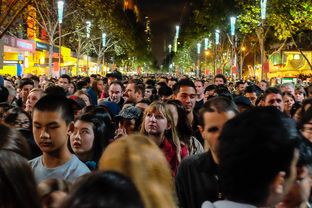Not just consumers, but new taxpayers and voters heralded by demographic trends. In preparation, among other things, we must continue to fund and support public schools to prepare our young for a diverse future and leadership positions and and roles that they will assume.
-Angela
Young Texans Make Up Most Diverse Generation
If demographics are destiny, the youngest Texans appear destined to make the state dramatically more diverse.
While white Texans still make up the largest racial group, the state's demographic future is in the hands of younger Texans, according to new age, race and ethnicity figures released Thursday by the U.S. Census Bureau. The
estimates, which track population change from July 2014 to July 2015,
show that older generations of Texas are more white while younger Texans
are much more likely to be part of a racial or ethnic minority group.
Both of those breakdowns stand in contrast to the state’s overall share of Texans — 57 percent — that are non-white.
The new figures, particularly the diversity among young Texans, fuel predictions
that Texas may be the next state where Hispanics become a plurality,
comprising the largest racial or ethnic group though not a majority. If
that happens, Texas would join New Mexico and California.
As of July 2015, Hispanics made up 38.8 percent of the state's population while white residents made up 43 percent.
The state’s white, black
and Hispanic populations all grew in size last year, but the overall
share of white Texans continued to drop slightly. And it was the
Hispanic population that grew the fastest.
Nationally, the continued
growth of the Hispanic population is due largely to natural increase —
Hispanic parents having more babies — and not immigration from other
countries. Research by the state demographer has shown
that while people born in Latin American countries continue to make up
the largest group of immigrants in Texas, the rate at which they are
moving to the state has decreased in the past decade.
Once again, Starr
County — located in the Rio Grande Valley along the Texas-Mexico border
— had the highest share of Hispanics in the country with 95.8 percent,
followed by several other border counties.
But the recent rapid growth in the Hispanic community is not limited to the border region.
The state's urban cores
have seen consistent growth among the Hispanic population. Among the
state's 25 most populous counties, suburban counties surrounding
Houston, Austin and Dallas have experienced the fastest growth in
Hispanic residents since 2010.
This analysis includes people who are identified as non-Hispanic white, non-Hispanic black or Hispanic.
Correction: As originally published, the second chart
accompanying this story showed incorrect numbers for all the county by
county statistics on fastest Hispanic population growth.

No comments:
Post a Comment